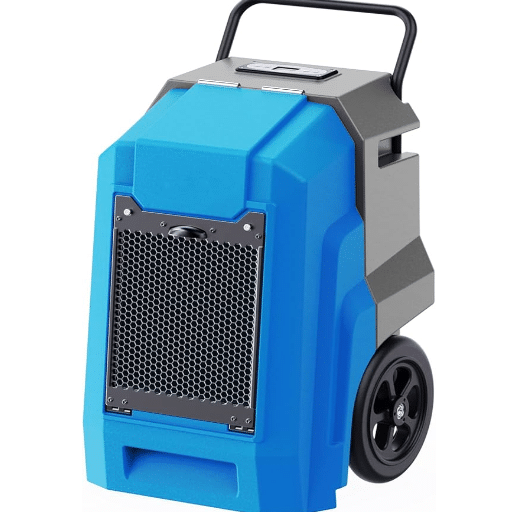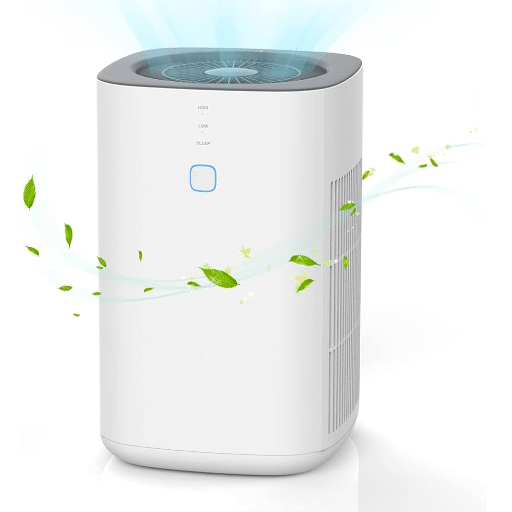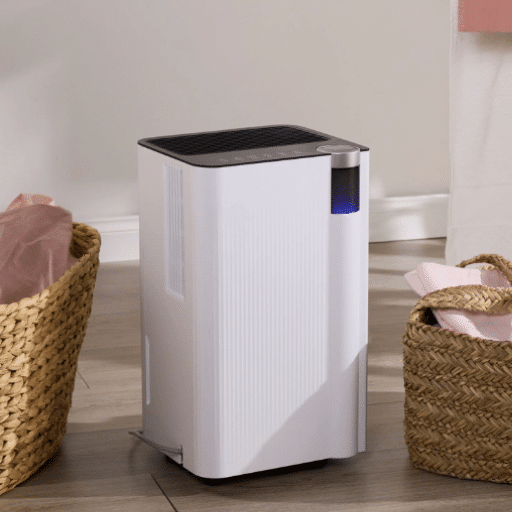Introduction to Dehumidifiers

A dehumidifier is designed to extract excess water from the air, creating more comfortable living spaces while preventing mold, musty odors, and moisture damage. The unit draws in humid air, removes water through condensation, and releases drier air back into the space.
What is a Dehumidifier?
A dehumidifier is an electrical device created to manage and reduce air humidity for comfort, health, and protection of moisture-sensitive items. Modern dehumidifiers feature energy-saving modes, timers, and integrated humidity sensors.
How a Dehumidifier Works
Factors That Affect Dehumidifier Performance Time
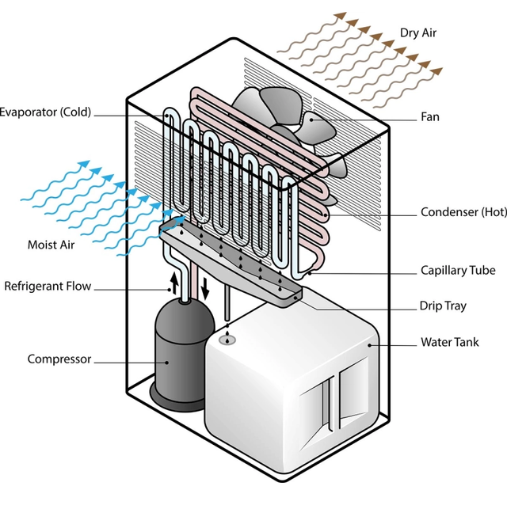
| Factor | Impact on Performance | Optimization Tips |
|---|---|---|
| Room Size | Larger spaces require more time | Match dehumidifier capacity to room size |
| Initial Humidity Level | Higher humidity = longer processing time | Start with continuous operation for severely humid spaces |
| Airflow | Better circulation improves efficiency | Keep 6-12 inches clearance around unit |
| Temperature | Warmer conditions enhance performance | Maintain room temperature between 68°F-74°F |
| Dehumidifier Type | Capacity and technology affect speed | Choose appropriate type for your climate |
Room Size and Configuration
The space size directly correlates to moisture removal time. Complex room shapes or multiple areas may create air circulation challenges, reducing efficiency.
Sizing Rule of Thumb:
- 500 sq ft room = 30-40 pint capacity dehumidifier
- Basements typically require 50+ pint capacity
- Central placement away from walls maximizes efficiency
Dehumidifier Types
| Type | Best For | Operating Conditions |
|---|---|---|
| Refrigerant | Warm, humid regions | Works with cooling coils |
| Desiccant | Cold climates | Uses absorbent materials |
| Portable | Multiple rooms | Versatile placement options |
Average Time Frames for Different Room Sizes

- Moderate Humidity (60%): 3-4 hours with 30-pint dehumidifier
- High Humidity (70%+): Up to 6 hours
- Optimal Performance: 4-6 hours average
- Moderate Humidity: 4-6 hours with 50-pint dehumidifier
- High Humidity: 8-10 hours (especially poor ventilation)
- Optimal Performance: 6-12 hours average
- Moderate Humidity: 6-8 hours with 70+ pint dehumidifier
- High Humidity: 10-12 hours for overly damp conditions
- Commercial Spaces: 6-12 hours with high-capacity units
Tips to Optimize Dehumidifier Performance
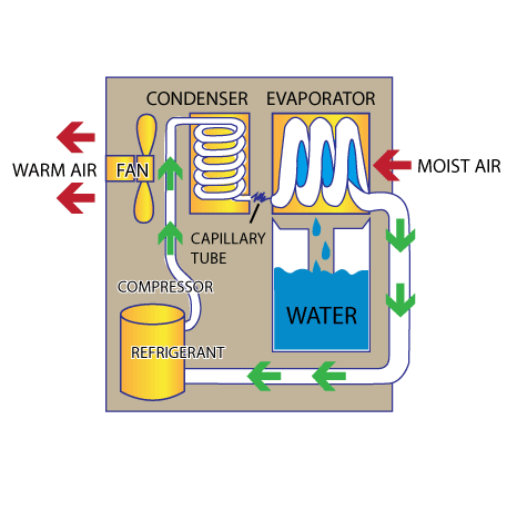
Essential Optimization Strategies
- Right-Size Your Unit: Match dehumidifier capacity to space requirements
- Strategic Placement: Center unit with 6-12 inches clearance on all sides
- Regular Maintenance: Empty water tank and clean filters monthly
- Optimal Settings: Target 30-50% relative humidity
- Temperature Control: Maintain steady, moderate room temperature
Maintenance Schedule
| Task | Frequency | Benefit |
|---|---|---|
| Empty Water Tank | As needed (when full) | Maintains continuous operation |
| Clean/Replace Filters | Every 1-2 months | Optimal airflow and efficiency |
| Clean Coils | Seasonally | Prevents mold growth |
| Check Drainage System | Monthly | Prevents water backup |
Placement and Airflow Considerations
- Position unit in the center of the dampest area
- Ensure minimum 6-12 inches clearance around unit
- Avoid placement near walls, furniture, or curtains
- For basements, place near windows or foundation walls
- Keep doors open between connected spaces for optimal airflow
Temperature and Humidity Control
Maintain steady room temperature between 68°F-74°F for optimal dehumidifier performance. Warmer air holds more moisture, making it easier for the unit to extract humidity efficiently.
References
-
Dry Out Before Rebuilding – Texas A&M University – Provides insights into dehumidifier performance, including water removal rates under specific conditions.
-
Flood Recovery: Dry Out Before Rebuilding – North Dakota State University – Discusses drying times and factors affecting the efficiency of dehumidifiers in flood recovery scenarios.
Frequently Asked Questions (FAQ)
How Long Will a Dehumidifier Take to Dry Out a Room?
The amount of time it takes for a dehumidifier to dry out a room depends on its size, its humidity, and the dehumidifiers capacity. In general, a standard dehumidifier can take either a few hours or a few days to dry out a room.
\How Long Does a Dehumidifier Take to Perform Its Function?
After switching on the dehumidifier, the device starts working immediately. Nevertheless, reaching the set humidity level depends on the starting moisture level in the air and the dehumidifier’s moisture removal capacity and may take several hours.
What Factors Contribute to the Length of Time a Dehumidifier Will Take?
The dehumidifier’s effective operation within a given time frame depends on the size of the dehumidifier, the area to be dehumidified, the circulating air, the starting humidity level, and the room’s ventilation. A dehumidifier that is properly positioned in a small to average sized room will work faster in comparison to one that is in a larger, more humid room.
How Long to Dehumidify a Room To Dry It Out?
Typically, a dehumidifier would take a few hours to remove moisture in the air. This is measured in pints per day (ppd). Depending on the ppd of the unit, a 100 ppd dehumidifier can reduce the level of humidity over a short time significantly.
Is There a Set Amount of Time a Dehumidifier Should Run to Dry Out a Damp Room?
A dehumidifier should keep running non-stop until the set humidity levels are achieved in order to dry out a damp room. The finish time may differ but for very high levels of dampness it is recommended to run the dehumidifier for 24 hours so it gets the best results.
How Does a Dehumidifier Dry a Room?
An effective dehumidifier works on a process that involves taking in air that is humid and condensing the moisture in the air through a process of removal. The now dry air is circulated back into the room where the device is, and thus the mold, mildew and any kind of moisture growth that is harmful is controlled. The cycle keeps going until the set humidity is reached.
How Long Does a Dehumidifier Take to Prevent Water Damage?
In the proper context, a dehumidifier can work in the short span of hours to effectively reduce an area’s humidity and prevent water damage. Water damage and deteriorations can be mitigated in the long term and hours to days heavy moisture can also be helped reduced. If the unit is run regularly, the problems can be prevented in the future in maintenance of proper set moisture levels.
How Long Does a Dehumidifier Take To Dry a Basement?
The time taken for a dehumidifier to dry a basement is often longer than usual because of the enclosed areas and higher moisture levels. The time taken to dry the basement also depends on the size of the basement and how moist it is. Furthermore, the capacity of the unit also contributes to the drying time. Drying may take a couple of hours or it may take a few days.
What is the Time Taken by a Dehumidifier To Control Humidity in a Small Room?
A dehumidifier is capable of taking a short time, usually 1 to 4 hours, to remove moisture in a small room. The time taken in removal is influenced by humidity levels and dehumidifier capacity. Furthermore, the air circulation in the room contributes to the time taken in removal.

